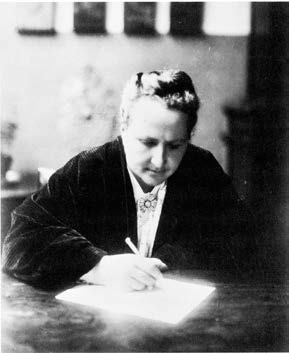Tender Buttons: The Corrected Centennial Edition of Gertrude Stein’s Avant-Garde Text
By Renate Stendhal
Gertrude Stein (1874-1946), the self-declared “literary Einstein of the century,” is one of the most famous and least read of America’s authors. During her lifetime, her writing was ridiculed and rarely found publication, unless she published it herself. Her massive oeuvre of 600 titles is still a problem for the academic canon.
And yet, there is a popular Gertrude Stein whom everybody knows and loves to quote. “(A) rose is a rose is a rose is a rose” is the most quoted line of modern American literature, narrowly followed by “there is no there there.” The language revolutionary had a knack for playful, child-like one-liners that, even today, ring in our ears like pop tunes or advertisements. “Pigeons on the grass alas.” “When this you see remember me.” “I am I because my little dog knows me.” “Commas hold your coat for you.” “Before the flowers of friendship faded friendship faded.”
In our post-modern context, her lines sound like “tweets,” and these tweets are loved, repeated, and reinvented by young writers and artists. When Stein left Paris for an America tour, in 1934-35, she was broadcast reading her own texts. Her delivery of “If I Told Him: A Completed Portrait of Picasso” (1923) comes across like a modern performance piece: “Shutters shut and open, so do queens. Shutters shut and shutters and so shutters shut and shutters and so, and so shutters. And so shutters shut and so shutters shut and so shutters and so.” The rapid-fire rhythm of her dark, melodious voice makes her the unmistakable first “rapper” of the century.
There were other American expatriates in Europe, major American writers like Henry James and Edith Wharton, but Gertrude Stein is the one with an enduring influence on our contemporary world.
The modern and post-modern relevance of Gertrude Stein has been recognized in 2011 by two major exhibitions. Seeing Gertrude Stein: Five Stories (at the Contemporary Jewish Museum of San Francisco) was the first-ever show focused on Stein’s personality and life. The San Francisco Museum of Modern Art (SFMOMA) launched a parallel exhibition on the defining influence of the Stein siblings on modern art: The Steins Collect: Matisse, Picasso and the Parisian Avant-Garde.
Both shows, seen by some 350,000 visitors, reflected the central position of Gertrude Stein in the birth of modernism, signifying that she was much more than a “mother” or “muse” to her famous artist and writer friends. As an art patron—first with her brother Leo Stein, then with her life companion Alice B. Toklas—she was a trendsetter and tastemaker, connecting artists and writers at her legendary Paris salon at 27, rue de Fleurus. Row upon row of incendiary, scandalous art hung on her walls—Cézanne, Renoir, Matisse, Manet, the Fauves and Cubists—making her studio, in Hemingway’s words, “one of the best rooms in the finest museum.”
Now, one of her early challenging texts, Tender Buttons, is coming out in a new edition by San Francisco’s City Lights Books. For the first time (since its publication in 1914), the book includes not only Stein’s first, original version, but also her own hand-written edits and corrections. This gives us a glimpse into “Stein’s ‘mind grammar’ operating at full tilt” (Anne Waldman). Stein’s revolutionary writing in Tender Buttons has been called hermetic and “abstract.” She did in writing what Picasso and her other painter friends were doing in their Cubist painting. Writing had to be moved out of the grip of the nineteenth century. All naturalistic description, romanticism and sentimentality had to be left behind.
In three sections, “Objects,” “Food,” and “Rooms,” Tender Buttons presents Stein’s opaque, often unrecognizable, sometimes sexy and funny, and always resolutely unconventional envisioning of things. “Asparagus in a lean, in a lean to hot.” “A shallow hole rose on red, a shallow hole in and in this makes ale less.” Readers are invited to decode or (in post-modern academic terms) contextualize her sentences, crack open her word games and double entendres and play along with the four languages Stein knew: German, Yiddish, French, and English. Feminist interpreters claim that those tender buttons of the title are a lesbian allusion to erotic body parts… If this gets you going, take heart. Some lines and passages are as easy as Stein’s evocation of “A Petticoat”: “A light white, a disgrace, an ink spot, a rosy charm.”
Renate Stendhal, Ph.D. is the award-winning author of several books, among them the photo-biography “Gertrude Stein in Words and Pictures” and the recently published “Lesbian Marriage: A Sex Survival Kit” (www.lesbiansexsurvival.com). For a related Gertrude Stein event, happening on April 23, please see the listing on page 24.










Recent Comments